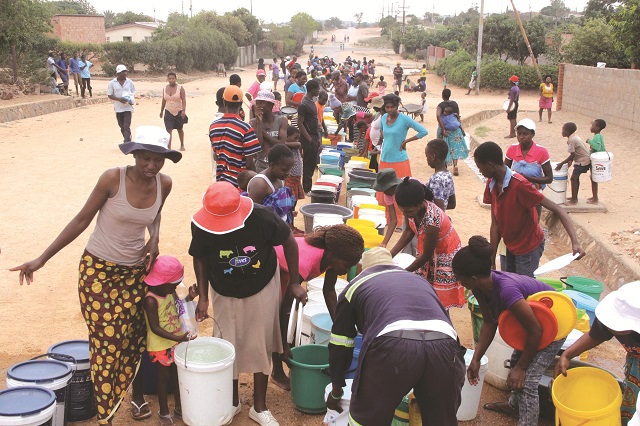Bulawayo tightens water shedding. . . as crisis worsens
By Vusumuzi Dube
Bulawayo’s water situation has over the weeks deteriorated with most western suburbs experiencing extended water shedding of up to five days per week as the city council struggles to pump enough water, it has been learnt.

In addition, the local authority says its chlorine gas stocks were dwindling and efforts to replenish the key component in water purifying were being hampered by the shortage of foreign currency while water in dams has also drastically gone down.
Council authority’s spokesperson Mrs Nesisa Mpofu confirmed that council was failing to meet their pumping capacity at Nyamandlovu resulting in low levels at some of their reservoirs.
“Currently water shedding has been resumed as there is more work to be done at Magwegwe Reservoir in terms of balancing out with the Nyamandlovu input. Council is not intending on introducing water shedding. It may come up in areas or wards which are fed from Magwegwe Reservoir as they are affected by the lack of delivery by Nyamandlovu Aquifer or in cases where we have a major power disruption affecting our supply lines from the dams,” said Mrs Mpofu.
On the water treatment chemical situation, Mrs Mpofu said council was worried about the impending rainy season which would require an increased use of water chemicals which could see them failing to reach their water delivery requirements.
“As a result of the shortage of foreign currency, we are currently having a problem with the supply of water treatment chemicals, particularly chlorine gas. We are currently on a hand to mouth situation with regards to chlorine gas. With the rainy season approaching, the problem is likely to worsen,” said the spokesperson.
Chlorine gas is used for disinfecting water in the treatment process.
Sunday News last week toured the city’s high density suburbs and discovered that residents in a majority of these areas claimed they had gone without water for as much as five days with the local authority even resorting to providing water bowsers to alleviate the water crisis.
Long queues were also observed at boreholes.
“All we want is honesty, if we are in a crisis can we be told so that we prepare ourselves, not these surprisingly long water shedding periods,” said a Mr Norman Ndlovu from Old Magwegwe suburb.
Meanwhile, according to the latest dam statistics, the city’s six dams are 65 percent full with Mtshabezi dam pegged at 92 percent with a volume of 47 million cubic metres, Lower Ncema is 67 percent full with a volume of 13 million cubic metres of water, Insiza Mayfair is 70 percent full with a volume of 122 million cubic metres and Inyankuni is 67 percent full with a volume of 54 million cubic metres.
Umzingwane Dam on the other hand is 44 percent full with water available at the dam amounting to 19 million cubic metres while Upper Ncema is fast approaching decommissioning levels at 27 percent full with the water available pegged at 12 million cubic metres.
Bulawayo has a history of introducing water shedding as the city faces water shortages either because of low dam capacity or failure to pump adequate water.
In 2012, the city made international news after it introduced the “Big Flush”, a synchronised toilet-flushing programme on weekends, aimed at unblocking the city’s sewer system after prolonged water restrictions.
The city also introduced water shedding in 2016 after some of the supply dams were decommissioned due to reduced water levels. Sunday News.






